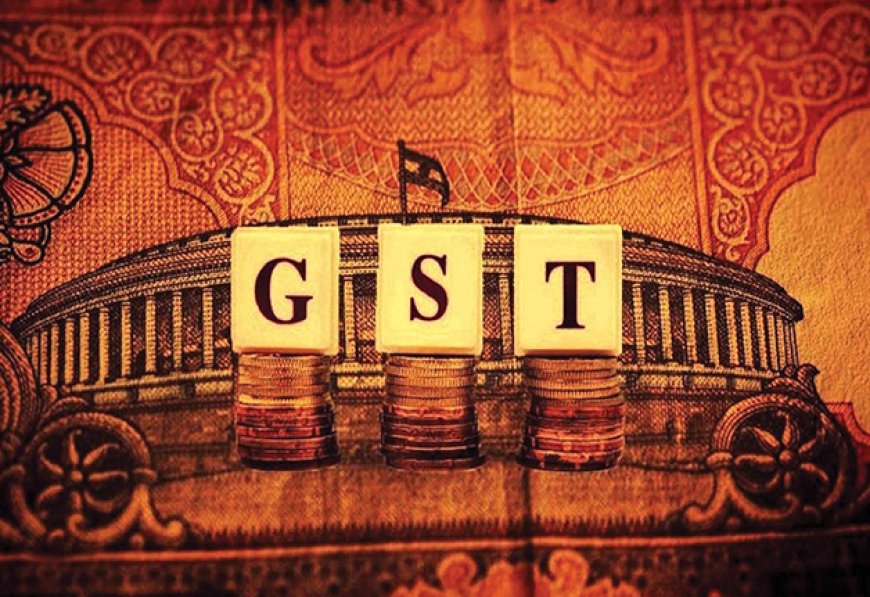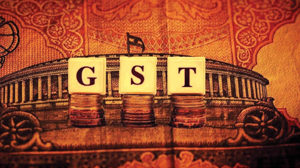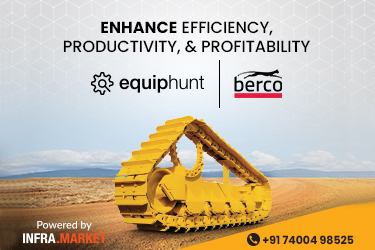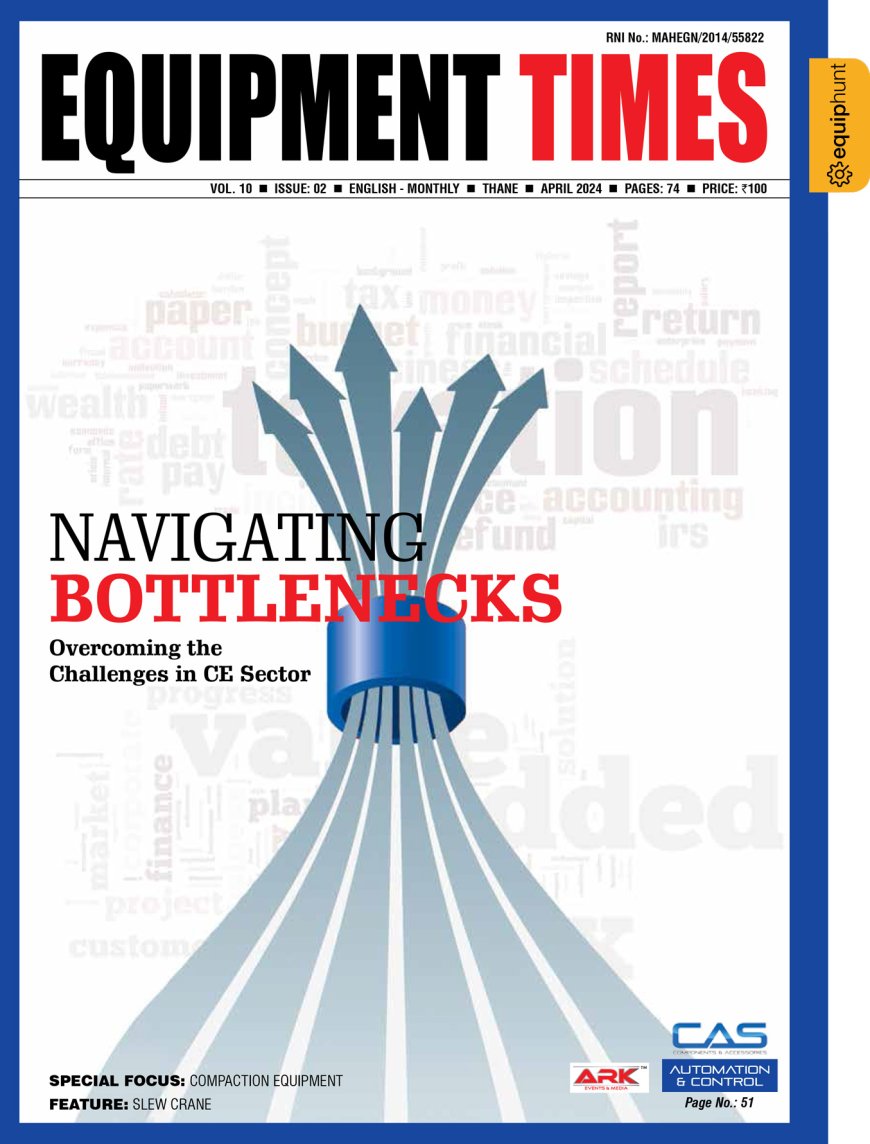The GST Blues
Now, the industry has welcomed the new tax regime; however, it hopes for a corrective measure at the earliest – and 18% tax seems to be ideal that can energise the sector. Agith G Antony knits together the different threads

 Now, the industry has welcomed the new tax regime; however, it hopes for a corrective measure at the earliest – and 18% tax seems to be ideal that can energise the sector. Agith G Antony knits together the different threads of hopes and fears from the CE industry.
Now, the industry has welcomed the new tax regime; however, it hopes for a corrective measure at the earliest – and 18% tax seems to be ideal that can energise the sector. Agith G Antony knits together the different threads of hopes and fears from the CE industry.
The revised growth projection in 2017 by ICEMA from 20% to
5 % is an indicator of the impact of 28% GST tax on the construction and mining equipment, may be, on a short term. The immediate impact is a projected dip in sales, higher cost for the buyers, and a negative impact on cash flow, possible escalation of project cost and time.
In simple terms, it defies logic. Clubbing a construction equipment, be it a backhoe, excavator, loader, or for that matter, a concrete pump, which are very constructive in their functional perspective, with luxury items on tax-front, may even foil the very dream of fast racking the development agenda. The construction and equipment industry feels that the 28% levied on majority of construction and mining equipment, in essence will hamper the growth trend as the buyer ‘s tax burden is increased by about 10%, which eventually make project development costlier.
For example, typically, a road project has 8-9% of Capex. A 300 km road project would be 2800 crores or so and the Capex at 280 crores. An increase of 10% would mean 28 crores upfront which is huge. For contractors who have already bid for infra projects, the additional cost could be a higher burden if they cannot use the higher input tax credit. Such a situation could impact the pace of construction; as the pace of construction is controlled by cash flow and any drop in cash flow will always impact progress.
In fact, in a road construction project over 70% of the work is carried out by earthmoving and material handling equipment. It can be an excavator to clear the ground, or a grader to level it, a backhoe with different attachment used to change the utility things, or a hydra to lift and move impediments. On the other hand, even if it is usually big project developers who bid for infrastructure projects, most of the actual implementation of project work is carried out by small and medium enterprises to whom the work gets sub-contracted. These SMEs, scattered throughout the country, carry out functions like construction, logistics and other ancillary services. While they require high-value assets such as earth-moving and material handling and other equipment, the cost increase in machinery due to 28% tax, can be disastrous for them. To add salt to the wound what makes their job even more difficult is the fact that mainstream financing channels like banks usually do not find them loan-worthy.
The Past & the Present
Before the GST announcement and its implementation from July 1st 2017, for over a decade the author has been a part of scores of ‘press meets’ organized by OEMs. Invariably in every such press meet, there were queries on GST and its anticipated impact on OEMs. In fact, all of them (OEMs) were very positive and had high levels hopes – be it simplification of tax structure, movement of equipment across borders, ease of doing business. However, the 28% tax in the new GST regime, totally unexpected, seems to have dashed their hopes.
The Indian Construction Equipment Manufacturers Association (ICEMA) has made a representation to the government to review this rate and bring it down to 18% considering the impact it will have on the infrastructure investment costs, but in vain. Now, the industry has welcomed the new tax regime; however, it hopes for a corrective measure at the earliest – and 18% tax seems to be ideal that can energise the sector.
The statement from AnandSundaresan, President, ICEMA, and also the Vice Chairman and Managing Director, SchwingStetter India reflects this sentiment. “The suspense is over and now GST is a reality. Myself, our company SchwingStetter India, and also members of ICEMA, have always welcomed implementation of GST. We are only anxious because of many rumours about the government’s and our readiness to sail through the new system at the earliest. No one knows what is in store, and what the challenges, which I am sure, are many. I would only urge upon the law makers, inspectors and implementers to be reasonable in our mistakes the initial period and allow us to correct without penalty, as I feel there are many grey areas, which if left to discretionary interpretation of the officers concerned, could lead to unnecessary litigation. Though advance ruling provision exists, the committee has not been constituted and empowered yet. This has to be
given priority.”
The logic is simple as voiced by the research agency, Off-Highway Research. “The proposed GST rate for most construction equipment is 28 per cent compared to earlier effective taxes of 17.5-30 per cent in different parts of the country. The final price for the end-user will go up by 3-10 per cent due to higher rate of tax compared to existing VAT rate in most states, while it would come down by 1-2 per cent in a few states,” points out Samir Bansal, Manager, India– Off-Highway Research.
Cost Pressures
Let us listen to the views of the industry. “The new GST rate of 28% is much higher than the current average cumulative rate of tax for construction equipment across the country and hence this will increase the tax burden on CE buyers by about 10% which will eventually translate to more cost for infrastructure development in the country,” states Dimitrov Krishnan, Vice President and Head, Volvo CE India.
According to him the high rate could be a big dampner for the Indian CE industry which has seen good growth in 2016-17. Krishnan says, “We expect that buying activity could be hit after the GST rollout. The landed cost of goods will go up and hence the funds required for equipment purchase will be higher leading to higher cost of finance as well and the resulting cash flow impact for buyers. The degree of impact will largely depend on buyers’ ability to claim input tax credits.” He adds, “For OEMs the impact could be lower sales and the change to manage to adjust processes for GST compliance.” As for his views the high GST rate will hit the CE industry growth in 2017-18. And his notes resonate with many others from the industry. Remember, ICEMA’s growth projection for the year 2017 has already been revised, and that too, from 20% to 5%.
P Ramesh, Managing Director and CEO, Wirtgen India brings another angle to the story. However, he sheds light on a different area. For example, currently construction of roads for public is exempt from service tax, but this does not appear in the GST exemption list and could result in increase in construction cost for the project. Ramesh adds, “However, since under the GST regime, there is credit available for input taxes paid, that can counter-balance the higher GST rates. Thus, the higher GST rates should get neutralized if the contractor passes on the benefit of higher input tax credit available to them.” But that is conditional; it depends on the contractor’s willingness to pass the baton of the benefit of higher input taxes to the next runner. If one link in the entire chain is broken.
AmarnathRamachandran, President, LeeBoy India elaborates. “On the whole, OEMs will benefit as the CST component on purchase of local outstate inputs will reflect in GST credit. There will be a 7.85% cash flow impact as the inputs are mainly at 18.69% and the final billing for goods made by us are at 28%. Similarly, the customer has to pay 10% more on the machine. This, in a scenario, where large contractors are already cash-strapped does not auger well for the industry.”
There lies the thread DK Vyas, CEO,Srei Equipment Finance weaves into the GST fabric. According to Vyas despite the decent growth rate, latest macroeconomic indicators reveal prominent signs of a slowdown in both consumption and investment, which are precursors to an impending slowdown in GDP growth. Will the ill-advised move of 28% on construction equipment catalyze the downturn? According to him the “In construction and mining equipment (CME), around 50% of the equipment is taxed at 28% slab will hamper the growth of the CME industry which had already seen some tough years in the recent past. He suggests, “It will be prudent to considerably reduce the rates of GST as these equipments are essentials for building the Indian infrastructure. Construction equipment is an important part of this development as they form around 20%-40% of the project cost.”
Shedding some light on the rentals Ramachandran had this to say. “There will be a sharp increase in rentals by large contractors. For outstate hirers, the ones without ‘C’ form will save 5.5% as full CST will change to GST credit and this can be claimed against SGST billing.”
SharwanAgnihotri, Head-Marketing, Hyundai Construction Equipment India paints a different picture. According to him the 28% tax on earthmoving equipment may make imported machine more price-competitive. He explains, “GST @ 28% on earthmoving equipment and tax on every movement in supply chain would substantially increase the working capital requirement for manufacturers, dealers and customers. This high tax would increase the cost of acquisition of locally manufactured / assembled machines and make the imported machines more price-competitive. This disparity on acquisition cost along with high NPAs and stress on balance sheets of some of big customers would push the industry southward.
Heavy Toll on MSMEs?
How MSMEs are going to be impacted? According to Bansal of Off-Highway Research larger businesses that are registered for GST would be able to take credit for input tax, whereas unregistered businesses, which are normally small contractors/plant hirers would have to bear the differential tax burden in machine cost. On a positive note he adds, “It is expected that all large contractors would start demanding GST paid invoices to avail of tax input
credit, which might force smaller contractors/plant hirers to get their businesses registered.”
Blesson Varghese, Director, Marini India, Fayat Group elaborates it further. “As far as construction equipment manufacturing is concerned, like any other industry the processes will take a while to permeate and settle. CE manufacturing is quite heavily supported by MSMEs which are not very well geared for the changes and the new tax systems, so bumpy roads are surely expected. The big challenge according to him is the ability of MSMEs to completely change the DNA of their business practices at a faster pace than simply changing software and processes. However, he is hopeful of better day ahead. On a broader perspective he says, “Infra projects would see an increase in costs;
however. With credit available for input ‘taxes’ paid and if proper contingency is built in contracts, this should iron out the higher rates.” But again, it depends not only on the efficient implementation part, but also on the ingenuity of the contractor in passing on the baton of tax benefit to down the chain.
Leasing – a Better Option!
Vyas explains the scenario. “With the introduction of GST, we are probably headed towards a more transparent taxation regime for leasing. However, certain niggling issues still need to be sorted out. Thanks to a number of domestic and international factors, India is the world’s fastest growing major economy. Thus, investors from around the world are once again interested in the India growth story and are exploring opportunities to invest in India. What we need currently is a significant step up in investments in the infrastructure sector. Capacity creation in infrastructure is a must for any economy to sustain its growth momentum. India is no exception. While the government is doing its bit to increase its spending on infrastructure, to expedite the pace of infrastructure creation, there is an urgent need to bring in private sector investments.
According to Vyas leasing is a viable solution which can help the developers/contractors deleverage and reduce their on–books lending. GST on leasing harmonizes input across all levels to make the end product cost effective to the consumer. He elaborates, “Higher rates under GST leads to blocking of working capital as the output tax liability may not be able to fully absorb the input tax. The above factor results in increasing the cost of leasing equipment. In order to sustain the nascent leasing industry in infrastructure space, it is desirable that full input tax credit is allowed instead of providing a blanket restrictive clause.” He further adds, “Also defining ‘Assignment of Receivables’ under the ‘supply’ category has brought them under the levy of GST. This makes it difficult for infrastructure equipment financiers to procure funding for such transactions.”
“Despite these few jinks, overall impact is very positive as it will prove to be a game changer in the long run and bring in the much needed seamlessness in the Indian economic system,” Vyas sums up.
Advantage GST
GST touted as a’game changer’ in the new tax regime, has its basket full with many a fresh fruit. “Launch of GST is a pro-business initiative in the long run. Anything which is new or radical usually looks tough in the beginning and this is not any different. But once adopted, GST will ease the way we do business as it eliminates a lot of indirect taxes as well as the cumbersome process of collection of certain documents like C Form. This collection process used to be a drain on actual money which directly impacted the bottomline,” opines NitinLall, General Manager, Atlas Copco (India), Power Technique Customer Center. He adds, “We also anticipate better shipment and faster deliveries to end customers because goods can now be stocked at one logistic center enabling overall customer satisfaction,”
Says Ramesh of Wirtgen emphasizing the positive aspects: “GST will help the industry with same rates across nation. Removal of entry tax, octroi will also be helpful to the industry not only from cost perspective, but also from ease of doing businesses. This will help free movement of machines from one state to another. Thus GST with its ‘One Nation One Tax’ has removed the confusion regarding the tax treatment for work contracts. This means works contract will be treated as service and tax would be charged accordingly. This treatment of works contract as service and not as supply of goods will bring in much needed clarification to the works contracts. Under the current regime, different states have different schemes for VAT. GST will solve such with a much simpler straightforward calculation.”
“We do anticipate some challenges post-GST due to prevailing uncertainties, and of course, the higher tax rate. However, we also expect the situation to stabilize over the next few months. Incidentally, the next quarter is usually a leaner part of the year due to monsoons in most parts of the country,” opines Vikram Sharma, Advisor, Kobelco Construction Equipment India.
According to Bansal of Off-Highway Research GST would bring about uniform taxation and free movement of goods, and the businesses will also be able to claim credit for input taxes in tax payments. This would ultimately change the way business is done today, and equipment rental is expected to be a major beneficiary.
“Though there was a small fluctuation in demand, post demonetization, in some pockets, demand quickly picked up again. The 28% GST roll out is likely to impact the hiring segment more than the established contractors,” says BKR Prasad, Head – Marketing, Tata Hitachi.
Says Varghese, Marini, Fayat Group, “The GST will usher in a new era in the Indian business sector. However, like every change it will not be easy and the lack of information seems to bring in fear and uncertainty. Talking specifically about construction sector services, since with the present system the benefit of input tax paid is not fully available, the added benefits arising out of input tax credit on the raw-materials available under the new GST should result in an overall reduction and benefits for the end users.”
Karan Parik, Managing Director, Linnhoff India says, Looking at history and at nations where it is already in practice, I am sure that it will make a lot of sense for us and overall for the business fraternity. The impact of GST “will be very positive and will also cater to a bright future; and also a security with regard to foreign investor’s belief in our monetary system.”
Commenting on GST, Jyotsna Sharma, CFO, Sandvik Asia had this to say, We have been preparing for GST for almost a year now under the project ‘Lagaan’, the name inspired by the learning from the movie and I am happy to share that today we have all associated employees trained and GST ready. It is important to mention here that team focus and business involvement are the most important aspects which will drive the organization towards achieving the right goals under the GST regime. This would also require that each employee dealing in any form of business transaction is aware of the basics of tax.”
Dheeraj Panda, VP & Business Head, Excavator Business Unit, Sany Heavy Industry India sums up – “As with any policy change, we might see a temporary decline in demand due to doubts in implementation. However as the dust settles, the momentum of India’s infrastructure development will again be back on track driving up the demand for CE sector as well.”
At the same time, corrective measures needs to be taken to control the dust and make the growth engine move ahead!
Hits: 42














